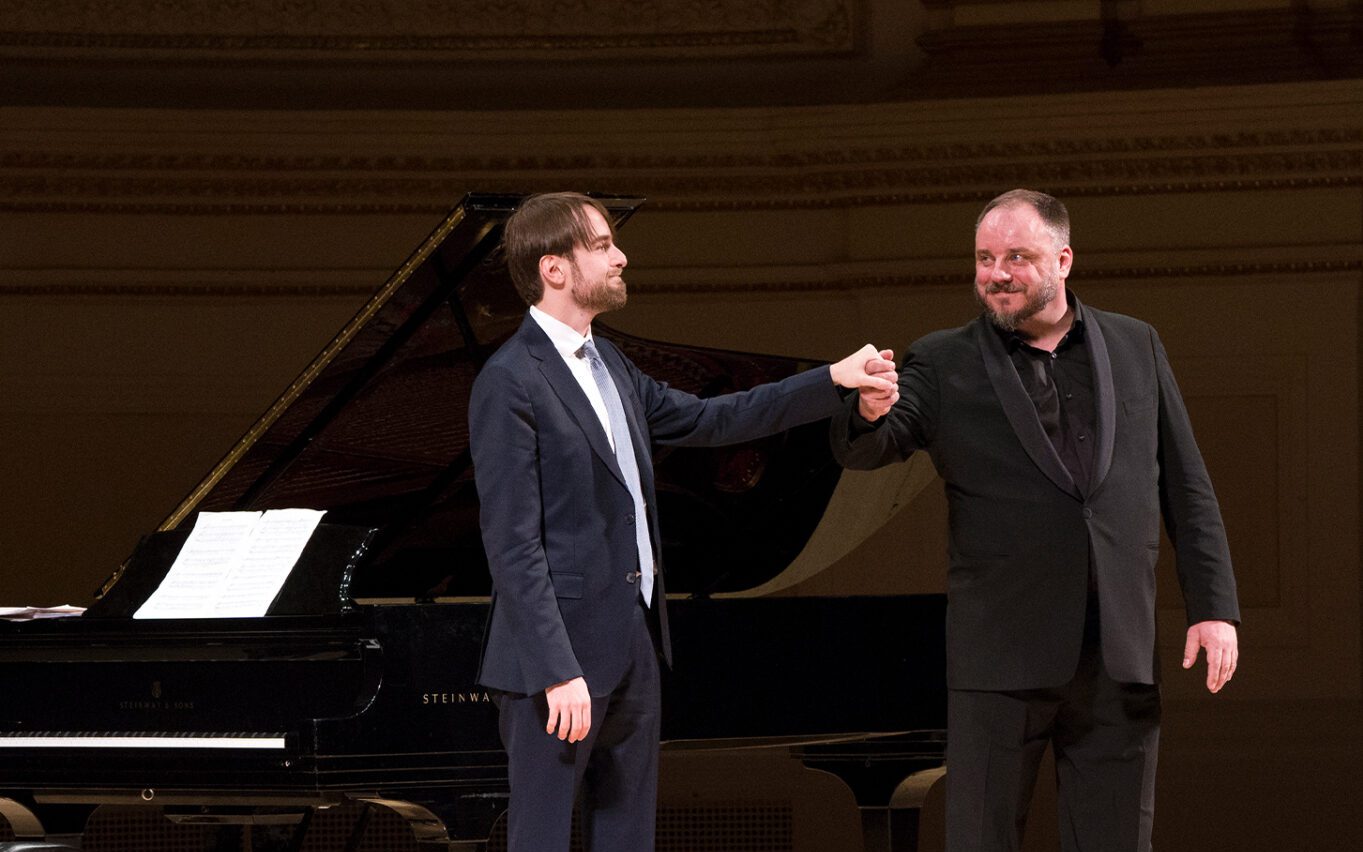As Sydney cools, it is soon becoming Winterreise season.
Daniil Trifonov on piano and Matthias Goerne as baritone made for a fine pair. Trifonov is a seasoned concert and solo pianist, and a composer in his own right, and the second Goerne renowned for his opera and concert performances.
A sense of the operatic could be gleaned instantly from Goerne’s performance. He leant nonchalantly against the grand piano, sans score, narrating the story of Schubert’s bleak winter journey with his body and voice.
Trifonov’s unique balance of bluntness and vivid lyricism in his performance style could be seen in his performance of the opening Gute Nacht. Schubert gives us sudden chiaroscuro-like shifts from major to minor, especially toward the end of this setting.
Then begin the programmatic elements of Schubert’s genius. Die Wetterfahne speaks of the wind playing with the weathervane. Trifonov traversed the full dynamic range in the span of the short opening motif. Goerne then mimics the howling wind with gusto. The wind imagery is redolent of Bach’s Zedern mussen von den Winden (BWV 150).
The programmatic elements of Gerfor’ne Tranen (Frozen Tears) were also not lost on Trifanov. He performed the falling chord in the piano introduction with any icy staccato. That set the scene nicely for Goerne’s vocal exposition. So also in Ruckblick runs are performed on the piano, staccato, to paint the image of the subject hurrying out of town.
Der Lindenbaum is always a crowd favourite. It is clear that it may well have been Goerne’s favourite too. Goerne’s vocal richness and vibrato, especially in the lower register, was remarkable, albeit at time distracting. Yet that never compromised his diction.
The closing “das Bachlein auf” in Wasserflut is an exercise in adventurous modulation. Goerne sang it with it exasperation it demands, and moved dramatically from piano to forte and to piano again. So too in Einsamkeit we hear Goerne give a full-bodied crescendo in one of the closing lines “Als noch die Sturme tobten”, “When the storms still raged”.
Some of the lieder were punchier than the others. Der sturmische Morgen was, fittingly, performed short and sharp. As was Die Post, which recalls the brass call of the postiglione, and the shimmering Tauschung.
Yet others were more lyrical. The prime example is Fruhlingstraum which is in a playful cantabile style, recalling Schubert’s more sonorous sonatas for violin and piano.
As with the Quodlibet in Bach’s Goldberg Variations, there is no better way to end a German art song cycle than with a folkish tune. Der Leiermann (the Hurdy-Gurdy Man) features a persistent droning bass of parallel fifths, redolent of most medieval folk tunes (like “patapan”).
